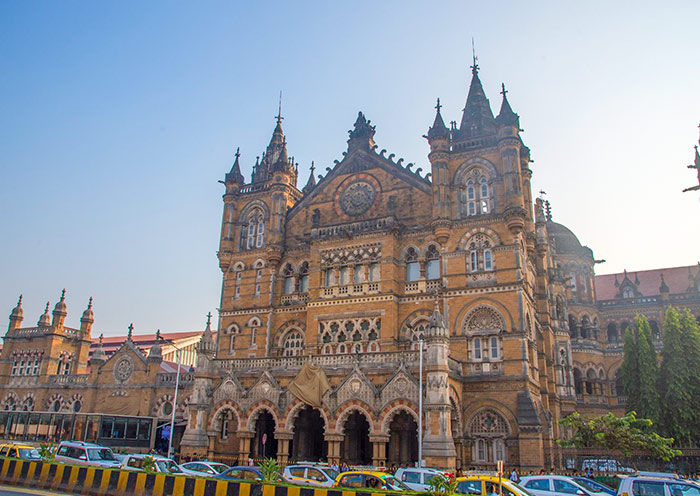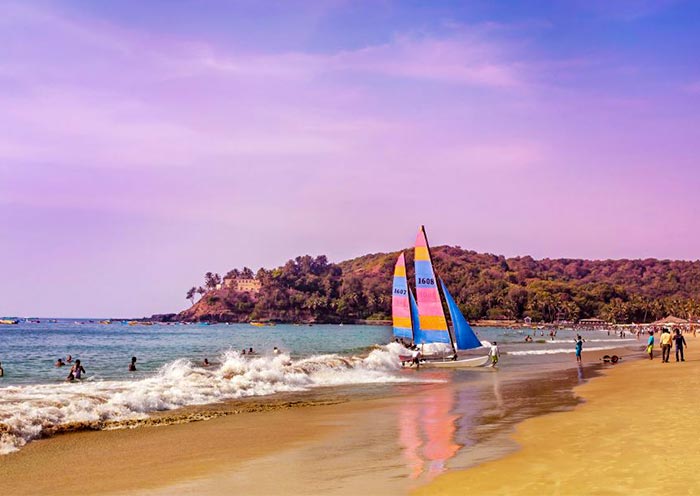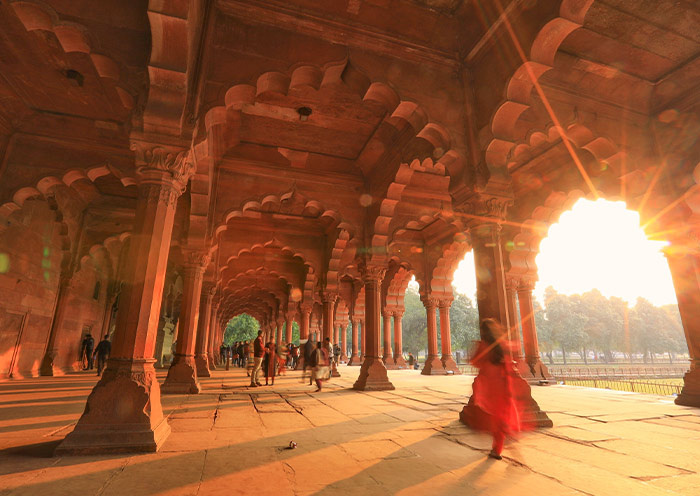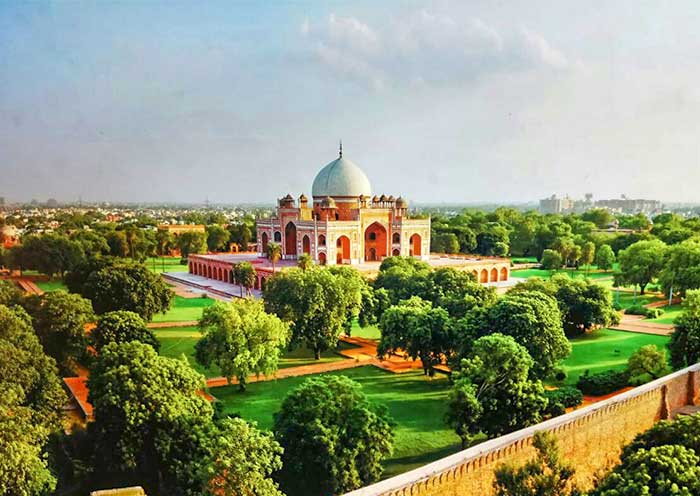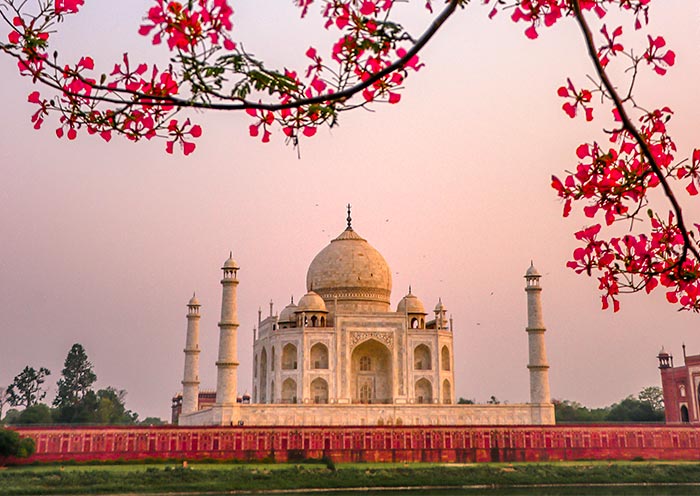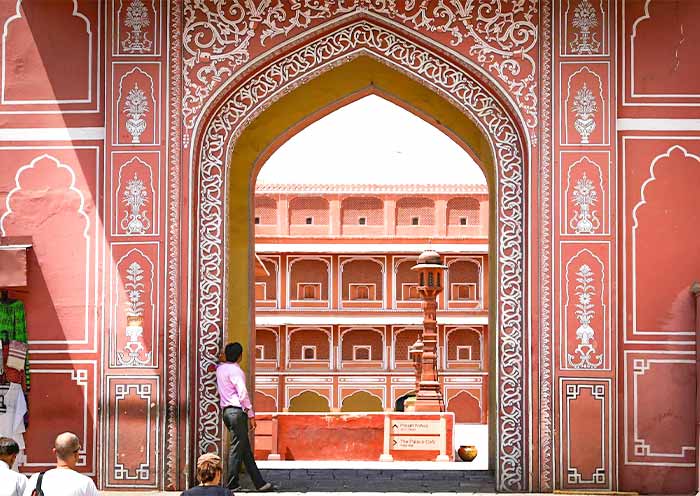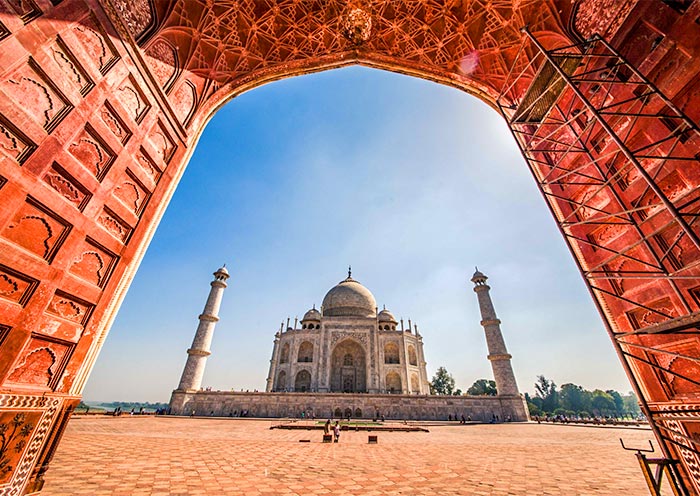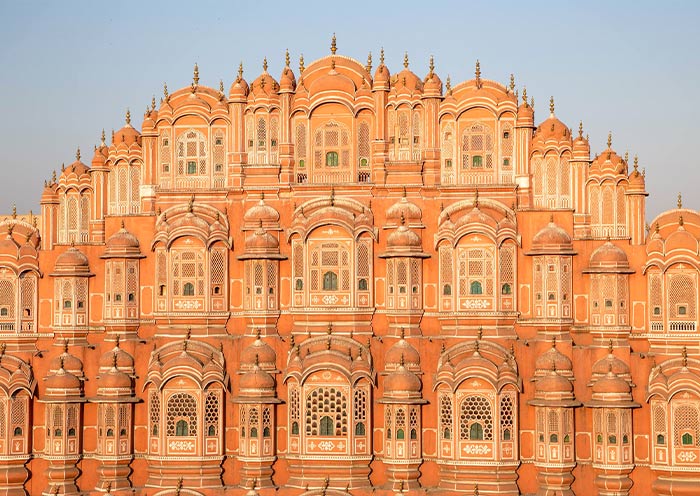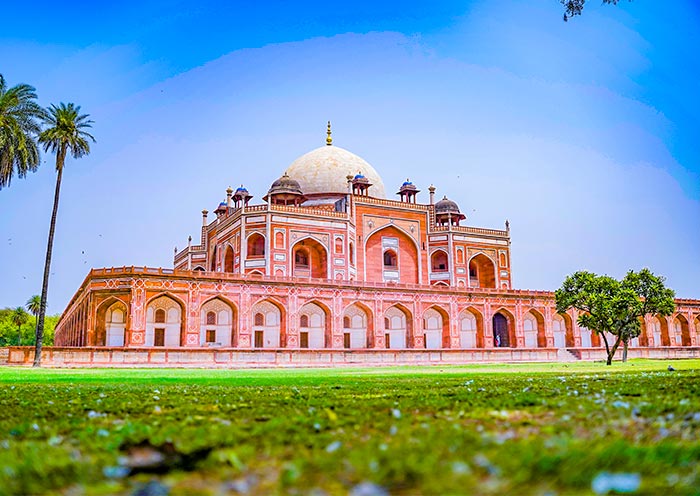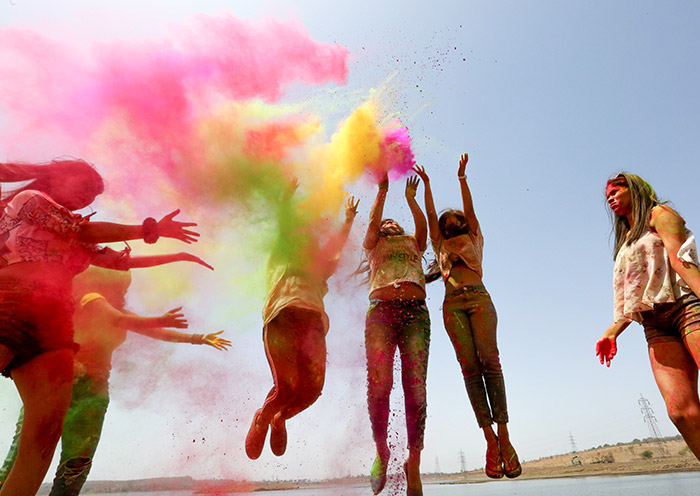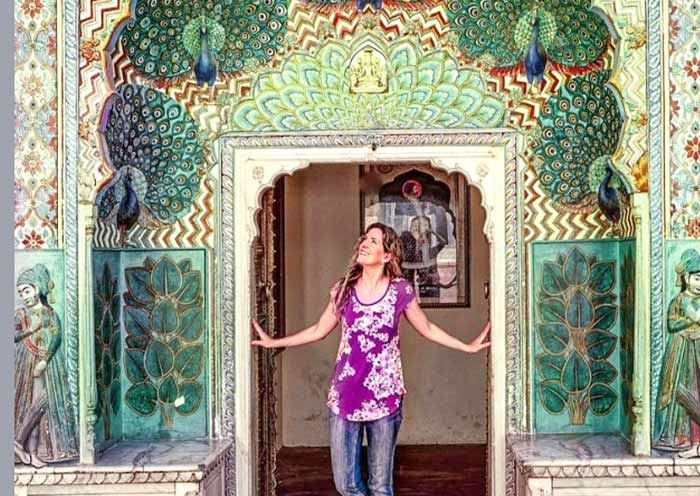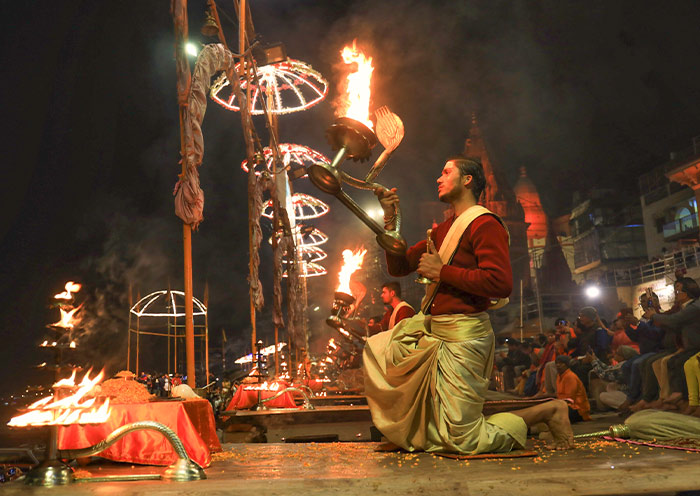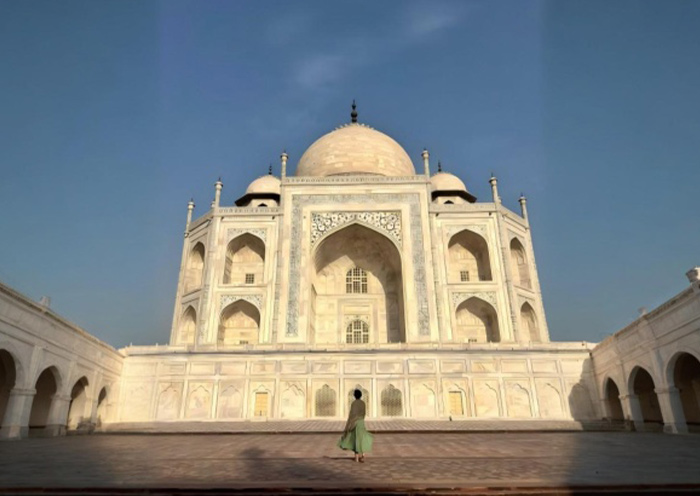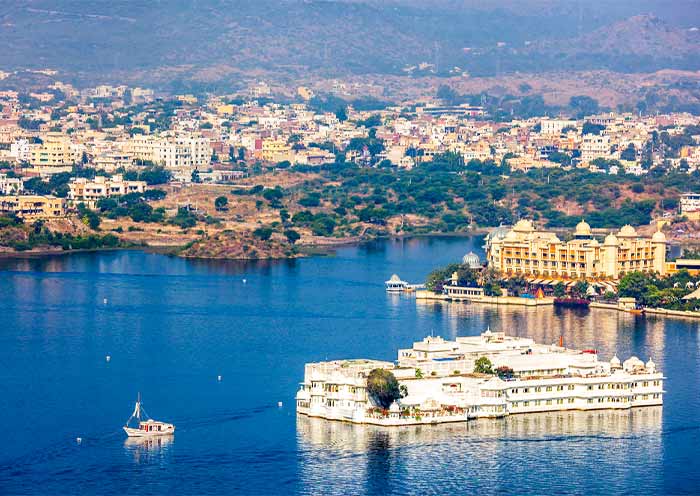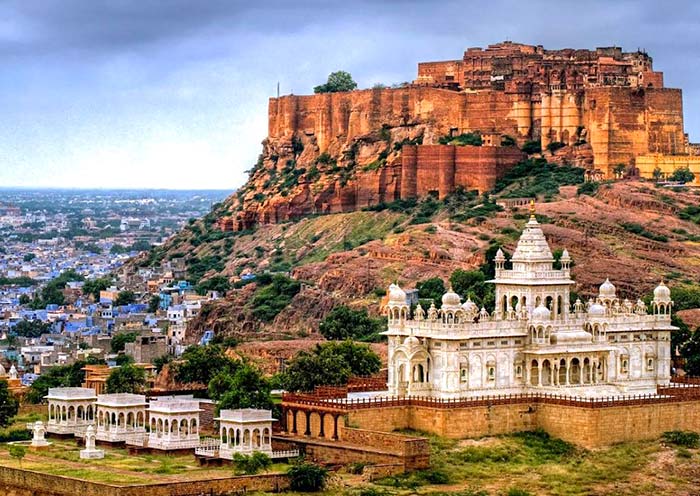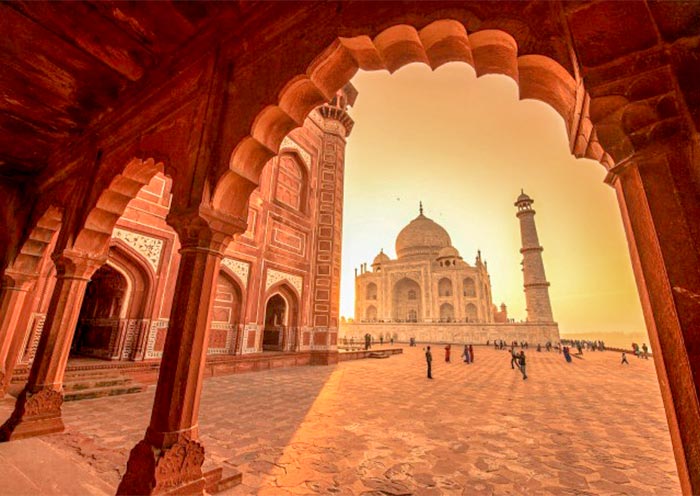How Many Days to Spend in India Golden Triangle
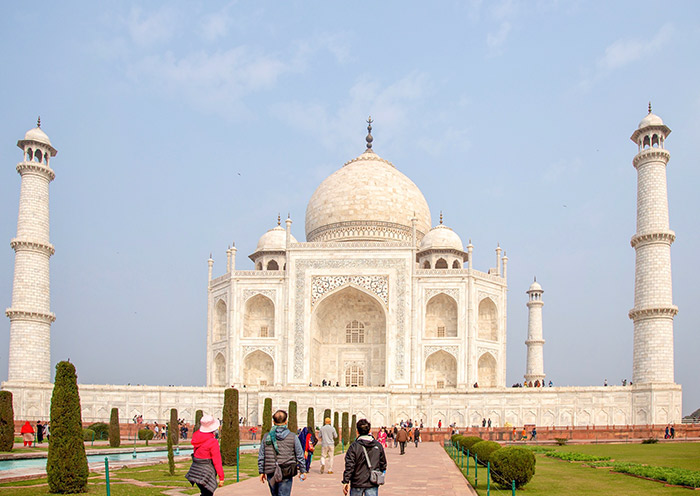
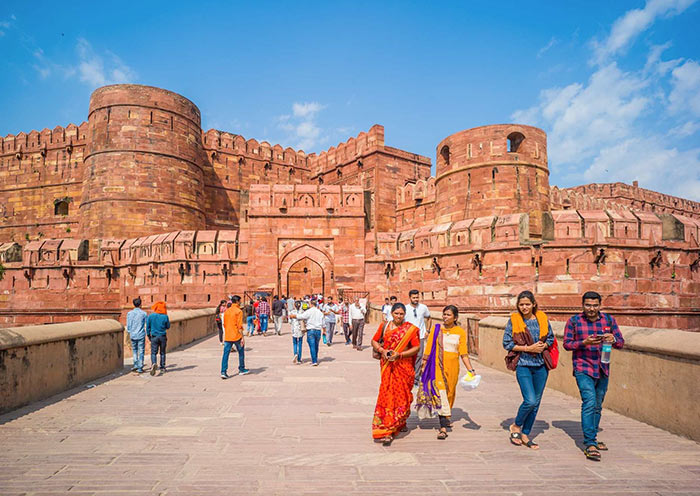
Most travelers spend around 6-8 days exploring the India Golden Triangle. This time-frame allows for 3 days of road travel between the cities and 1-2 days to explore the core attractions of each city. If you have a particular fondness for a city, you can choose to extend your stay by an additional day.
For first-timers, the 7-day Golden Triangle itinerary is the most popular and essential tourist route in India, chosen by around 95% of travelers visiting the country.
If you have more time available, you can consider combining the Golden Triangle with other popular tourist cities in India. For example, extending your trip by an additional 2 days would allow you to visit cities like Varanasi, Amritsar, Udaipur, or Ranthambore. These cities offer unique cultural and historical experiences that complement the Golden Triangle.
If you're interested in exploring cities in south India, such as Mumbai or Goa, you would need more than 10 days to cover these destinations along with the Golden Triangle. Keep in mind that India is a vast country with diverse attractions, so it's important to plan your itinerary according to the time you have available and your specific interests.
For longer vacations, you have the flexibility to explore multiple popular destinations simultaneously. However, it's important to strike a balance between covering a wide range of places and allowing enough time to truly immerse yourself in each city's culture and attractions.
How to Spend 7 Days in India Golden Triangle
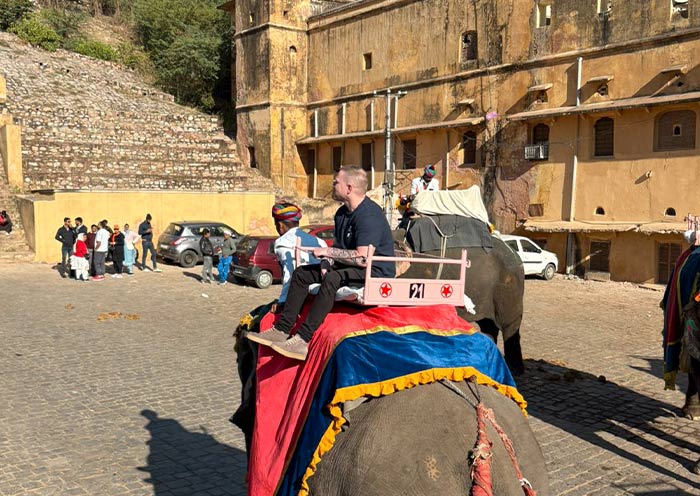
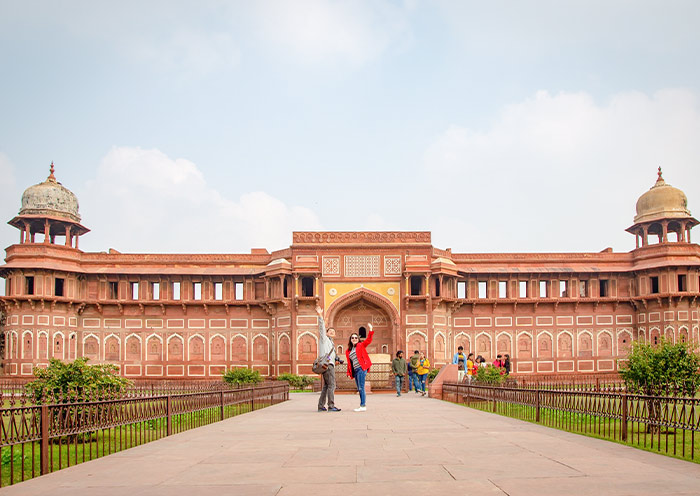
The Golden Triangle tour is the top route in India, and it's highly recommended for you to experience. This popular route takes you through three magnificent cities in northern India: Delhi, Agra, and Jaipur. It provides an incredible insight into India's rich cultural tapestry, allowing you to witness architectural marvels, experience local traditions, and taste the flavors of authentic Indian cuisine. It's a journey that will create lifelong memories and give you a true taste of the wonders that India has to offer.
Layout of India Golden Triangle 7 Days Itinerary
Day1-2: Delhi
Starting from Delhi, you'll have the opportunity to explore the vibrant capital city, visiting iconic landmarks like the Red Fort and the bustling markets of Old Delhi. The city's rich history and modern charm will captivate you.
Day 3-4: Agra
Next, you'll head to Agra, where the world-renowned Taj Mahal awaits. This magnificent marble masterpiece is a symbol of eternal love and is a must-visit attraction. While in Agra, you can also explore the majestic Agra Fort and immerse yourself in the city's fascinating Mughal heritage.
Day 5-6:Jaipur
From Agra, your journey continues to Jaipur, known as the Pink City. Here, you'll encounter the stunning Amber Fort, the intricate Hawa Mahal, and the grandeur of the City Palace. Jaipur's vibrant markets, delicious cuisine, and warm hospitality will leave a lasting impression on you.
Day 7: Jaipur back to Delhi and departure.
Highlights of Delhi Agra Jaipur 7 Days Itinerary
Delhi: Red Fort, Qutub Minar, Jama Masjid, Humayun's Tomb, Raj Ghat, Chandni Chowk
- Red Fort: Built in the 17th century, the Red Fort (also known as Lal Qila) is a magnificent fortress constructed with red sandstone. It served as the main residence of the Mughal emperors and showcases a fusion of Persian, Timurid, and Indian architectural styles. The complex houses stunning structures like Diwan-i-Aam (Hall of Public Audience) and Diwan-i-Khas (Hall of Private Audience)
- Qutub Minar: The Qutub Minar is an iconic medieval Islamic monument soaring to a height of 73 meters. Constructed in the 12th century, it is the world's tallest brick minaret and is surrounded by several other architectural gems, including the Alai Darwaza, Iron Pillar, and Quwwat-ul-Islam Mosque.
- Jama Masjid: Constructed in the 17th century, it showcases splendid Mughal architecture with its towering minarets, intricate marble work, and a vast courtyard that can accommodate thousands of worshippers. Climb the minarets for panoramic views of Old Delhi and soak in the serene atmosphere of this architectural masterpiece.
- Humayun's Tomb: This mausoleum, built in the 16th century, is a magnificent example of Mughal architecture and is considered a precursor to the Taj Mahal. Surrounded by lush gardens, Humayun's Tomb is the final resting place of Emperor Humayun and features intricate marble work, grand domes, and imposing gateways.
- Chandni Chowk: It’s one of Delhi's oldest and busiest marketplaces. Dating back to the 17th century, it offers a sensory overload of sights, sounds, and smells. Explore its narrow lanes, lined with shops selling textiles, jewelry, spices, and street food. Indulge in mouthwatering delicacies like parathas, chaat, and kebabs, and witness the rich tapestry of Delhi's culture and heritage in this bustling market.
Click to check more Delhi Top Attractions >>
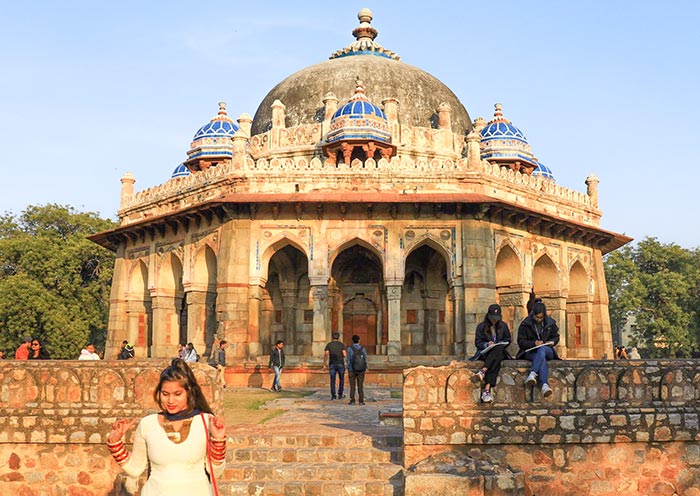
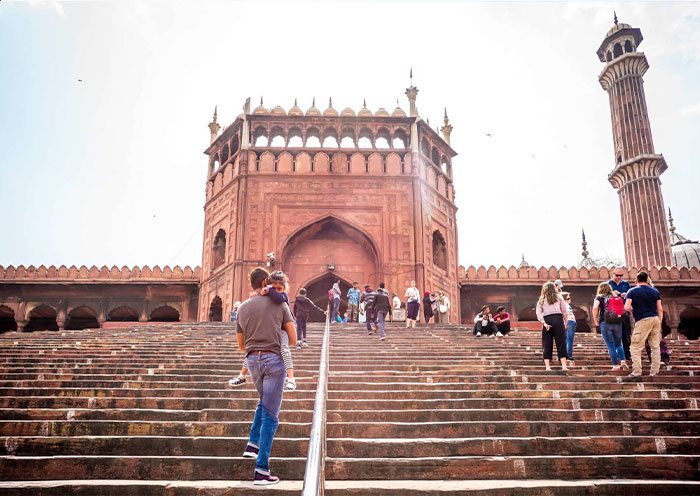
Agra: Taj Mahal, Agra Fort, Itmad-ud-Daulah's Tomb, Mehtab Bagh
- Taj Mahal: One of the most iconic UNESCO World Heritage Sites in the world, the Taj Mahal needs no introduction. This white marble mausoleum is a symbol of eternal love, built by Emperor Shah Jahan in the 17th century for his beloved wife, Mumtaz Mahal. Its exquisite craftsmanship, breathtaking symmetry, and beautiful gardens make it a must-visit destination.
- Agra Fort: Agra Fort, also known as the Red Fort of Agra, is a massive fortification made of red sandstone. It served as the main residence of the Mughal emperors until the capital was shifted to Delhi. The fort complex houses various palaces, including the Jahangiri Mahal, Khas Mahal, and Diwan-i-Khas, along with stunning views of the Taj Mahal.
- Itmad-ud-Daulah's Tomb: It’s often referred to as the "Baby Taj." Built in the 17th century, this exquisite mausoleum is a precursor to the grandeur of the Taj Mahal. Admire the intricate marble inlay work, delicate carvings, and the serene ambiance of this elegant structure. Located on the banks of the Yamuna River, it offers a peaceful retreat and provides a glimpse into the artistic finesse of the Mughal era.
- Mehtab Bagh: It’s a beautiful garden complex located across the Yamuna River. This meticulously landscaped garden offers stunning views of the Taj Mahal, especially during sunrise and sunset. Capture the reflection of the mausoleum in the river, creating a picturesque setting. Take a leisurely stroll, admire the blooming flowers, and revel in the tranquil atmosphere of this hidden gem.
Click to check more Top Places to Visit in Agra >>
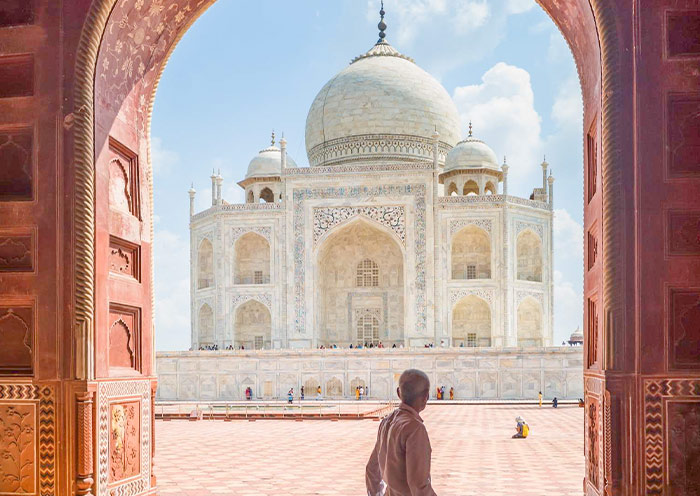
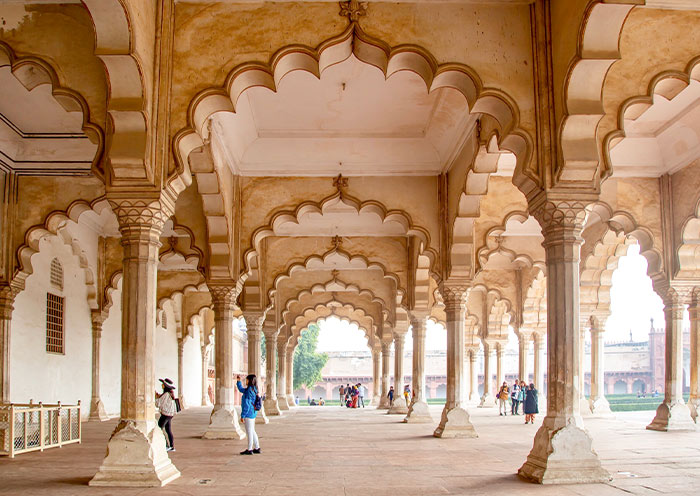
Jaipur: Amber Fort, Hawa Mahal, City Palace, Jantar Mantar
- Amber Fort: Located on a hilltop, the Amber Fort (also known as Amer Fort) is a magnificent fortress that showcases a fusion of Hindu and Mughal architectural styles. The fort's grandeur is reflected in its ornate palaces, intricate mirror work, and stunning views of the surrounding landscape.
- Hawa Mahal: Also known as the "Palace of Winds," Hawa Mahal is an iconic pink sandstone structure with intricate latticework and numerous small windows. It was built for the royal women to observe street processions without being seen.
- City Palace: The City Palace in Jaipur is a magnificent complex that blends Rajput and Mughal architectural styles. It houses several palaces, museums, and gardens, offering insights into the royal history and opulence of the Rajput rulers.
- Jantar Mantar: The Jantar Mantar in Jaipur is an astronomical observatory built by Maharaja Jai Singh II in the 18th century. This architectural marvel features a collection of unique instruments used for observing celestial bodies and measuring time and space. It is an excellent testament to India's scientific advancements during that era.
Click to check more Best Things to Do in Jaipur >>
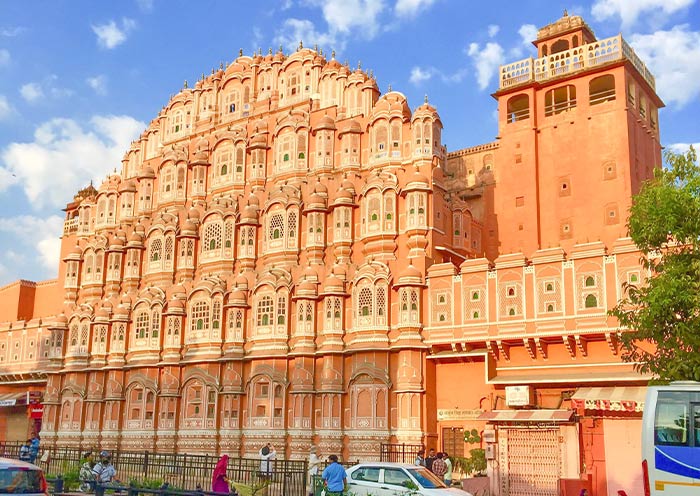
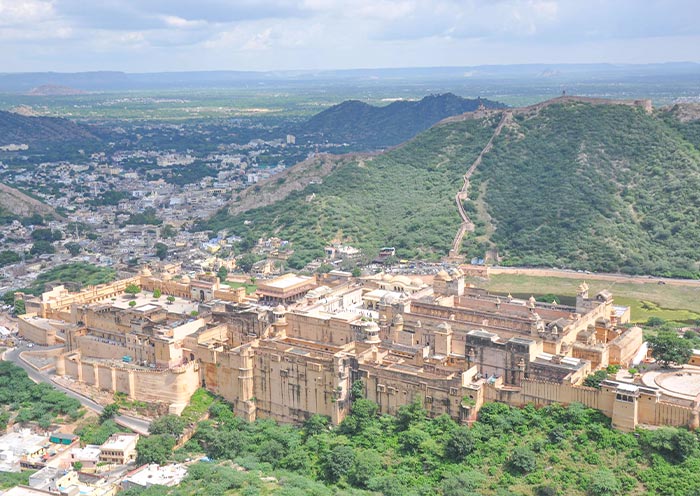
How to Spend 9 Days in India Golden Triangle
After completing the Golden Triangle itinerary in the first 6 days, you have the option to explore a fourth destination outside of Delhi, Agra, and Jaipur. There are 4 popular choices for this additional destination. For more distant cities like Varanasi and Amritsar, it is advisable to choose round-trip flights. On the other hand, for relatively closer destinations like Udaipur and Ranthambore, you can opt for road travel to reach these places. This flexibility allows you to extend your trip and experience more of India's diverse attractions beyond the Golden Triangle.
Click to check How to Plan an India Triangle Tour? >>
Route 1: India Golden Triangle with Varanasi Itinerary
Day 1-6: Classic Golden Triangle itinerary as mentioned above.
Day 7-8: Fly from Jaipur to Varanasi, the spiritual capital of India.
Day 9: Fly back to Delhi and departure.
Highlights of Varanasi
Varanasi, also known as Kashi, is one of the oldest and holiest cities in the world. It is a significant pilgrimage site for Hindus and offers a unique cultural and spiritual experience.
- Ganga Aarti Ceremony: The Ganga Aarti is a mesmerizing and spiritual ritual held every evening on the banks of the River Ganges. Devotees gather to witness the enchanting ceremony of lamps, incense, and rhythmic chants dedicated to the river goddess Ganga.
- Sunrise Boat Ride: Start your day with a serene boat ride on the Ganges River at sunrise. It offers a unique perspective of the ghats, the rituals being performed, and the city waking up. You can also witness devotees performing their morning prayers and rituals along the riverbanks.
- Sarnath: Located just a few kilometers from Varanasi, Sarnath is an important Buddhist pilgrimage site. It is where Lord Buddha gave his first sermon after attaining enlightenment. Explore the ancient ruins, visit the Dhamek Stupa, and learn about the history and philosophy of Buddhism.
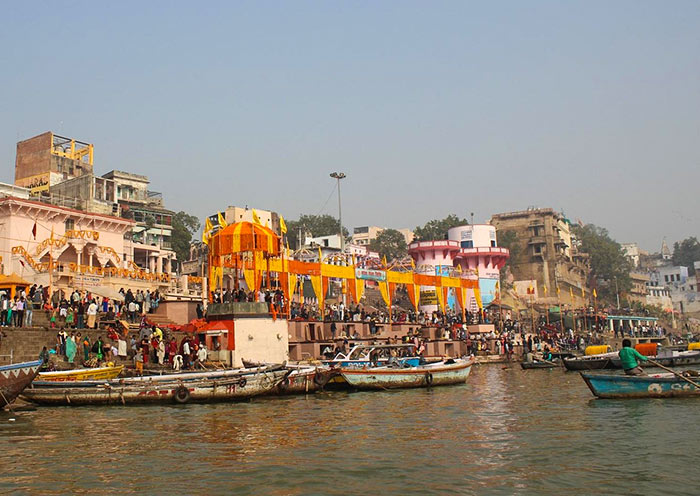
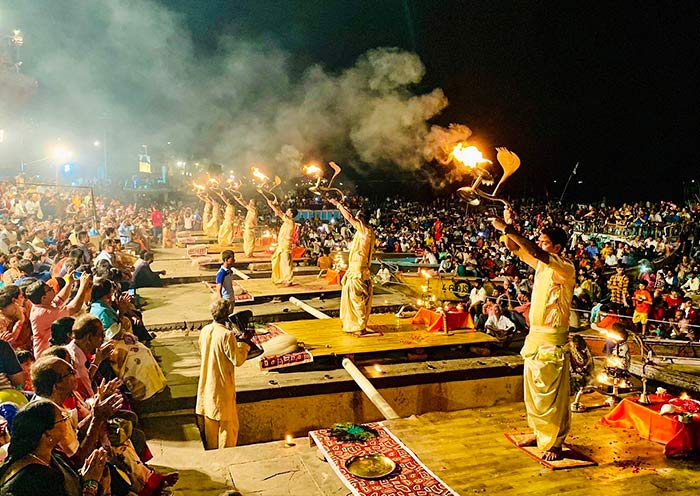
Route 2: India Golden Triangle with Udaipur Itinerary
Day 1-6: Classic Golden Triangle itinerary as mentioned above.
Day 7-8: Drive from Jaipur to Udaipur, the most romantic city in India.
Day 9: Fly back to Delhi and departure.
Highlights of Udaipur
Udaipur, also known as the "City of Lakes," is regarded as the most romantic city in India. It is renowned for its beautiful lakes, palaces, gardens, and rich cultural heritage
- City Palace: The City Palace is a magnificent complex that stands on the eastern bank of Lake Pichola. It is a blend of Rajasthani and Mughal architectural styles and offers stunning views of the lake and the surrounding city. Explore the various palaces, courtyards, museums, and enjoy the panoramic vistas.
- Lake Pichola: Lake Pichola is one of the most iconic attractions in Udaipur. Take a boat ride on the lake to admire the scenic beauty and enjoy the views of the City Palace, Jag Mandir Palace, and Lake Palace. Sunset boat rides are particularly enchanting.
- Jag Mandir Palace: Located on an island in Lake Pichola, Jag Mandir Palace is a beautiful palace complex. Visit this stunning structure, known for its marble carvings, tranquil gardens, and intricate architecture. It offers a serene retreat and fantastic views of the lake.
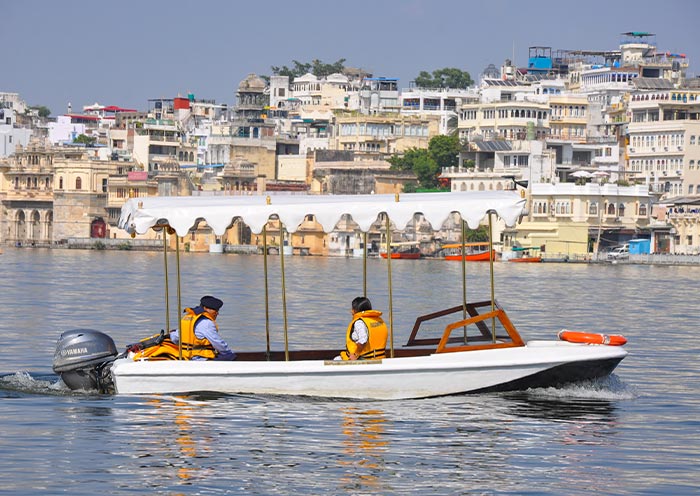
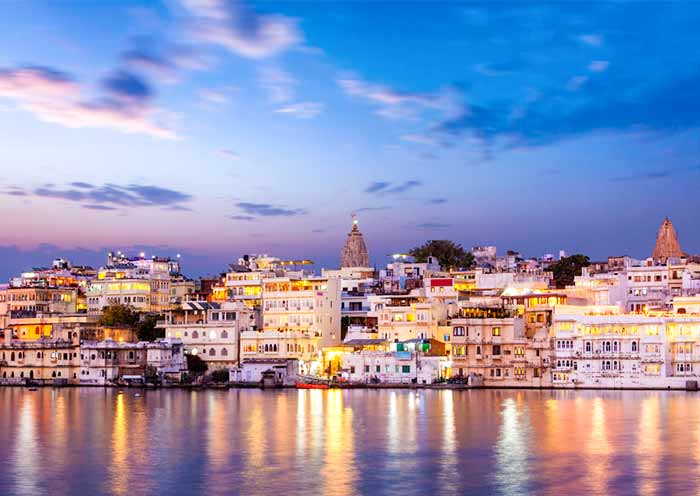
Route 3: India Golden Triangle with Amritsar Itinerary
Day 1-6: Classic Golden Triangle itinerary as mentioned above.
Day 7-8: Fly from Jaipur to Amritsar.
Day 9: Fly back to Delhi and departure.
Highlights of Amritsar
Amritsar, located in the northwestern state of Punjab, is a city known for its rich Sikh heritage, historical significance, and warm hospitality.
- Golden Temple (Harmandir Sahib): The Golden Temple is the most iconic and revered Sikh Gurdwara in the world. Its stunning golden architecture, serene Sarovar (holy pool), and welcoming atmosphere attract millions of visitors every year. Witness the spiritual rituals, listen to the soothing Gurbani (Sikh hymns), and partake in the Langar (free community meal) offered at the temple.
- Wagah Border: Located on the India-Pakistan border, the Wagah Border is famous for its daily evening ceremony known as the "Beating Retreat." This vibrant and patriotic event features synchronized military drills, flag-lowering ceremonies, and energetic performances. It showcases the unique border closing ceremony between the two countries.
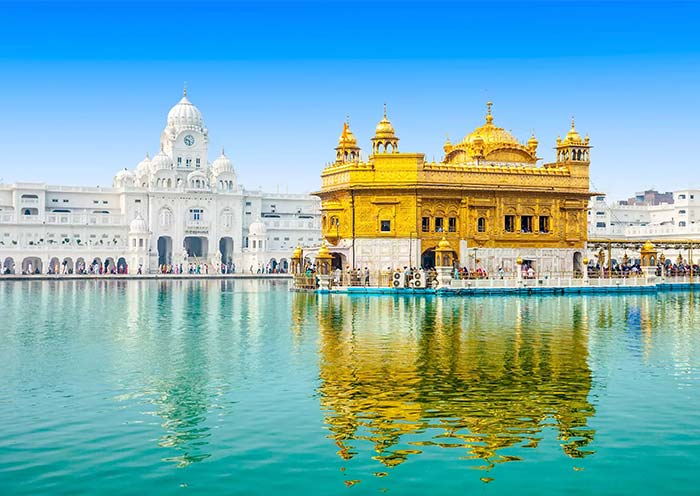
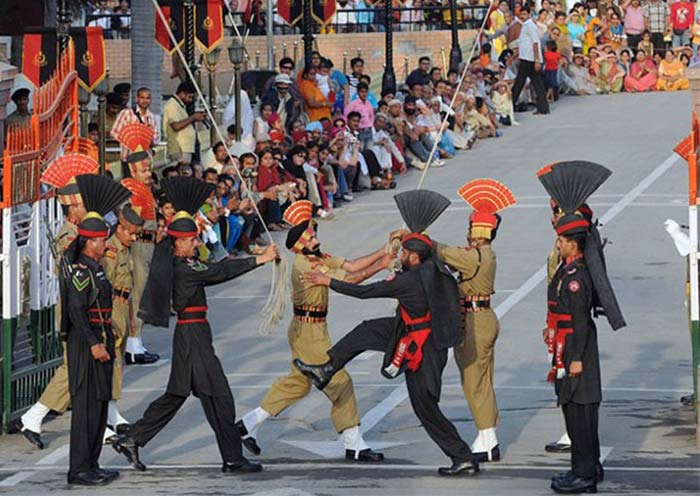
Route 4: India Golden Triangle with Ranthambore Itinerary
Day 1-4: Delhi to Agra itinerary as mentioned above.
Day 5-6: Drive from Agra to Ranthambore and jeep safari.
Day 7-8: Drive from Ranthambore to Jaipur and Jaipur sightseeing.
Day 9: Back to Delhi and departure.
Highlights of Ranthambore
Ranthambore, located in the state of Rajasthan, India, is renowned for its wildlife sanctuary and national park. It is one of the best places in India for tiger sightings.
- Ranthambore National Park: The star attraction of Ranthambore is its national park, known for its tiger population. Spread over an area of 392 square kilometers, the park offers thrilling wildlife safaris where you can spot tigers, leopards, sloth bears, sambar deer, and a variety of bird species.
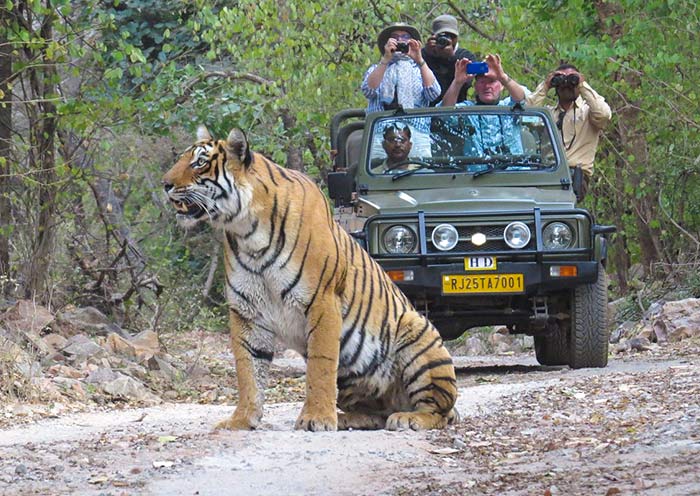
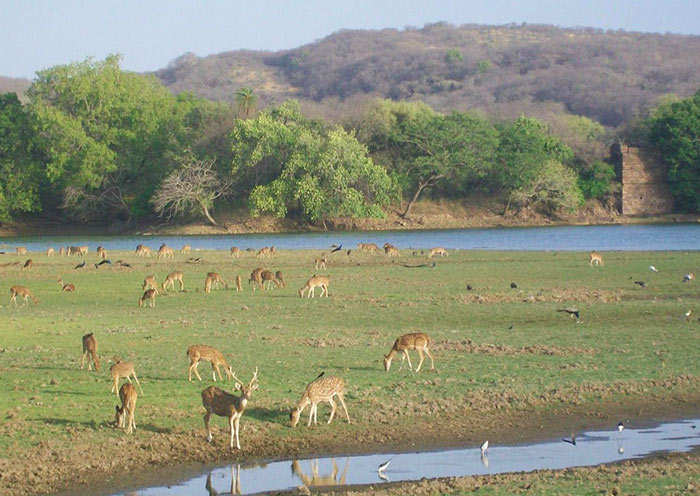
Extend India Golden Triangle Tour to 2 Weeks
Route 1: India Golden Triangle with Rajasthan Itinerary
Day 1-6: Classic Golden Triangle itinerary as mentioned above.
Day 7: Drive from Jaipur to Pushka
Day 8-9: Drive from Pushka to Jodhpur
Day 10-11: Drive from Jodhpur to Udaipur.
Day 12: Fly back to Delhi from Udaipur and departure.
Highlights
- Pushkar Lake, Pushka: The sacred Pushkar Lake is the centerpiece of the city and an important pilgrimage site for Hindus. Take a dip in the holy waters and witness the evening aarti (prayer ceremony) performed by the lakeside.
- Brahma Temple, Pushka: Pushkar is home to one of the few temples dedicated to Lord Brahma, the creator in Hindu mythology. Visit the Brahma Temple and soak in the spiritual ambiance.
- Mehrangarh Fort, Jodhpur: The stunning Mehrangarh Fort is a must-visit attraction in Jodhpur. Explore its massive walls, intricate architecture, and visit the museum inside to learn about the city's history and royal heritage. Don't miss the panoramic views of the "Blue City" from the fort's ramparts.
- Jaswant Thada, Jodhpur: Located near Mehrangarh Fort, Jaswant Thada is a beautiful marble cenotaph built in memory of Maharaja Jaswant Singh II. Admire its intricate carvings, tranquil gardens, and the breathtaking view of Jodhpur from its terrace.
- City Palace, Udaipur: The majestic City Palace of Udaipur, overlooking Lake Pichola, is a remarkable architectural marvel. Visit its opulent courtyards, ornate halls, and the Crystal Gallery, which houses a stunning collection of crystal artifacts.
- Lake Pichola, Udaipur: Take a boat ride on Lake Pichola and admire the stunning views of the City Palace, Jag Mandir, and the surrounding hills. You can also visit the picturesque Jag Niwas Island, home to the iconic Lake Palace hotel.
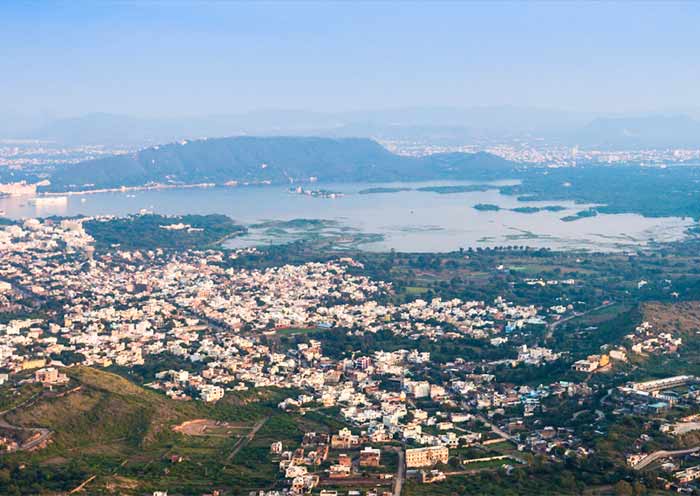
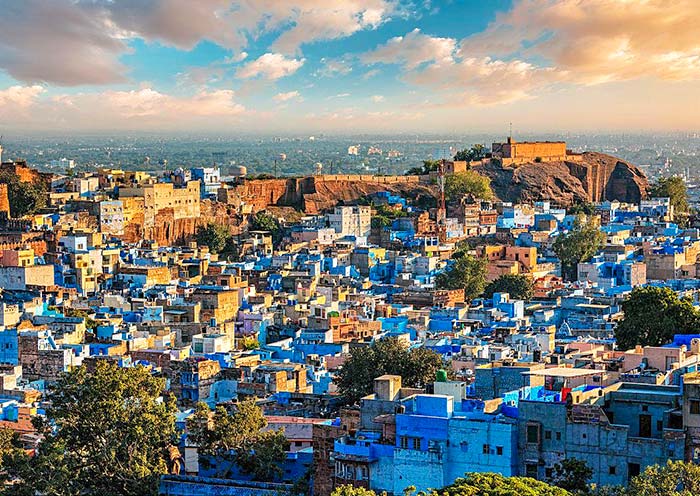
Route 2: India Golden Triangle with Mumbai and Goa Itinerary
Day 1-6: Classic Golden Triangle itinerary as mentioned above.
Day 7-8: Fly from Jaipur to Mumbai
Day 9-11: Fly from Mumbai to Goa and enjoy beach life.
Day 12: Fly back to Mumbai and departure.
Highlights
Mumbai offers a bustling city experience with its iconic landmarks, while Goa provides a laid-back coastal retreat with its stunning beaches, heritage sites, and vibrant nightlife. These destinations offer a diverse range of experiences in south India, allowing visitors to enjoy the best of both worlds.
- Marine Drive, Mumbai: Also known as the "Queen's Necklace," Marine Drive is a picturesque promenade that stretches along the coastline of Mumbai. It's a great place to take a leisurely stroll, enjoy the sunset, and soak in the vibrant atmosphere.
- Elephanta Caves,Mumbai: Located on Elephanta Island, a short ferry ride from Mumbai, the Elephanta Caves are a UNESCO World Heritage Site. These ancient cave temples house intricately carved sculptures dedicated to Lord Shiva.
- Beaches, Goa: Goa is famous for its beautiful beaches stretching along the Arabian Sea. Some popular beaches include Calangute Beach, Baga Beach, Anjuna Beach, and Palolem Beach. Enjoy sunbathing, water sports, and beachside shacks offering delicious seafood.
- Old Goa: Discover the historical charm of Old Goa, a UNESCO World Heritage Site. Visit the Basilica of Bom Jesus, which houses the mortal remains of St. Francis Xavier, and explore other impressive churches and cathedrals, showcasing the Portuguese influence in the region.
